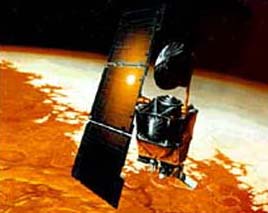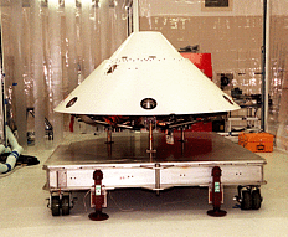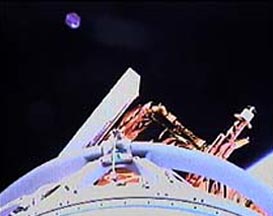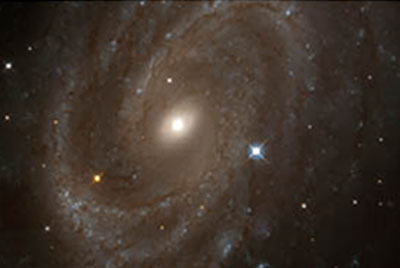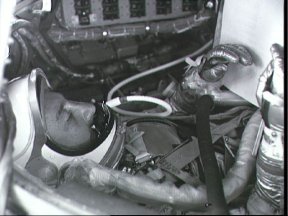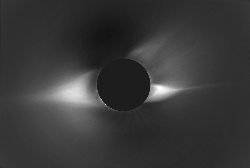Click on image for full size
Windows to the Universe original image
Related links:
1999--A Year in Review...
News story originally written on January 6, 2000
It was another exciting and frustrating year for the space science program. It seemed that every step forward led to one backwards. Either way, NASA led the way to a great century of discovery.
Unfortunately, the headline of the year must be the problem with Mars exploration. The Mars Climate Orbiter was lost because of a simple math error. The next attempt, landing the Mars Polar Lander, also failed. Scientists are still looking for the cause of this disaster.
The good news is, not every mission was a failure. The Far Ultraviolet Spectroscopic Explorer (FUSE) was deployed in June without a hitch, and the Chandra X Observatory had a successful launch in July. FUSE will use a spectrograph to study the Big Bang. Chandra takes images in X ray light, allowing scientists to see distant objects in a new way.
The Hubble Space Telescope continues on its path to success. With its help, scientists found the true Hubble Constant. Images of the Ring Nebula and distant objects shed new light on these relatively unknown stellar phenomenon.
The Liberty Bell 7 was rescued from its watery grave this past summer, and is now being cleaned for future display. The Liberty Bell was flown by Astronaut Gus Grissom as part of the Mercury Program. It sank to the floor of the Atlantic Ocean before it could be rescued. It remained there until now.
And lets not forget the last solar eclipse of the millennium. It occurred on August 11, 1999, and was viewed by millions in the Middle East and Europe. Scientists used this rare opportunity to study a theory that solar eclipses change gravity.
Finally, the Lunar Prospector was sent crashing into the Moon in search for water. Scientists say that no water vapor was found. So, we still don't know for sure if there is water on the Moon.
Overall, it was a busy year in space science. Although several discoveries were made, the loss of the two Mars spacecraft has left a sour taste in our mouths.







